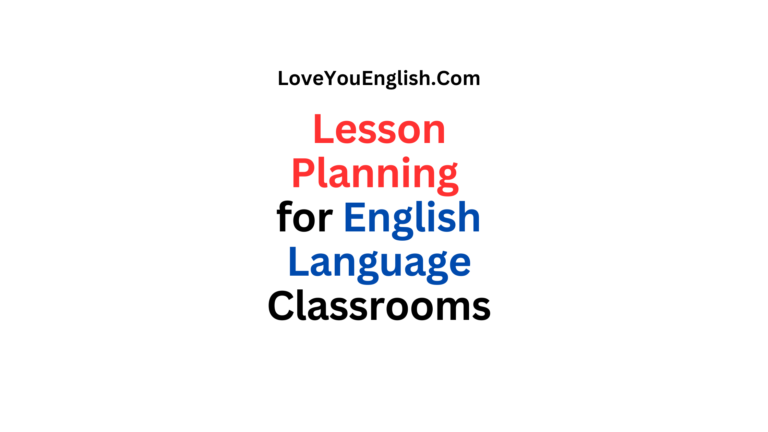The Role of Technology in English Teaching
Sharing is caring!
Technology has become an essential part of our daily lives. It is also changing how we learn and teach English.
In the past, learning English meant sitting in a classroom with a teacher, a blackboard, and books.
Today, technology provides new ways to make learning English easier, faster, and more interesting.
In this post, we will explore how technology is transforming English teaching.
1. Why Is Technology Important in English Teaching?
Technology is important because it makes learning English more interactive and fun. Students no longer need to rely only on textbooks and teachers.
They can use videos, apps, websites, and other tools to learn on their own. Technology also helps teachers create exciting lessons that capture students’ attention.
In addition, technology allows students to learn English anytime and anywhere. With a smartphone or computer, they can practice their skills whenever they want.
This flexibility is especially helpful for students who are busy with work or live far from schools.
2. Tools and Platforms for Teaching English
a. Online Classes
Online platforms like Zoom, Google Meet, and Microsoft Teams have made it possible for teachers to connect with students around the world. These platforms allow teachers to conduct live classes, share presentations, and use virtual whiteboards.
b. Learning Apps
There are many apps designed for learning English, such as:
- Duolingo: Helps students practice vocabulary, grammar, and pronunciation.
- Memrise: Focuses on vocabulary through games and repetition.
- Babbel: Offers structured lessons for all levels of English learners.
c. Interactive Websites
Websites like BBC Learning English, Grammarly, and Quizlet provide resources for improving reading, writing, and speaking skills. They also offer exercises and quizzes that make learning more engaging.
d. Digital Dictionaries
Online dictionaries like Merriam-Webster, Oxford Learner’s Dictionary, and Cambridge Dictionary allow students to find meanings, pronunciations, and examples instantly.
3. How Technology Helps in English Teaching
a. Improves Listening Skills
Students can use podcasts, YouTube videos, and audiobooks to improve their listening skills. For example, they can watch interviews, listen to stories, or follow guided lessons in English. This exposure to native speakers helps them understand different accents and speaking styles.
b. Enhances Speaking Skills
Technology provides tools like speech recognition software to help students practice speaking. Apps like Elsa Speak and Speechify give feedback on pronunciation. Video calls also allow students to practice speaking with teachers or language partners.
c. Builds Writing Skills
Grammar-checking tools like Grammarly and Hemingway Editor help students write better. These tools correct mistakes and suggest improvements in grammar, vocabulary, and sentence structure.
d. Improves Reading Skills
E-books, online articles, and news websites give students access to a variety of reading materials. Many platforms also include audio versions, so students can read and listen at the same time.
e. Makes Learning Fun
Gamified apps, like Kahoot! and Quizizz, turn learning into a game. Students earn points, unlock rewards, and compete with classmates, making English practice enjoyable.
4. Benefits of Technology in English Teaching
a. Personalization
Technology allows teachers to tailor lessons to each student’s needs. For example, if a student struggles with vocabulary, they can use apps focused on that area. Similarly, advanced students can find challenging materials to keep improving.
b. Real-Time Feedback
With tools like quizzes and interactive exercises, students get instant feedback. This helps them identify and correct their mistakes immediately.
c. Global Connectivity
Technology connects students with native English speakers and learners worldwide. Platforms like HelloTalk and Tandem let students practice conversational English with language partners.
d. Accessibility
Students with disabilities can benefit from technology too. Text-to-speech tools, subtitles, and screen readers help students with visual or hearing impairments.
e. Cost-Effectiveness
Many apps and resources are free or affordable. This makes English learning accessible to students who cannot afford expensive classes.
5. Challenges of Using Technology in English Teaching
While technology has many benefits, it also has challenges:
a. Internet Dependence
Not all students have reliable internet access. This can make it difficult for them to participate in online classes or use digital tools.
b. Over-Reliance on Technology
Some students might rely too much on technology and forget the importance of human interaction. Speaking with teachers and classmates is essential for improving conversational skills.
c. Distractions
Using phones and computers for learning can lead to distractions. Students might get tempted to browse social media or play games instead of focusing on their lessons.
d. Technical Issues
Glitches, slow internet, or device problems can disrupt learning. Teachers and students need to be prepared to handle these issues.
e. Lack of Training
Not all teachers are comfortable using technology. They need proper training to make the most of digital tools.
6. Tips for Teachers Using Technology
If you are a teacher, here are some tips to use technology effectively:
- Start Small: Begin with simple tools like PowerPoint presentations or YouTube videos. Gradually explore more advanced options.
- Combine Traditional and Modern Methods: Use technology along with face-to-face teaching for a balanced approach.
- Encourage Active Participation: Use interactive tools like polls, quizzes, and games to keep students engaged.
- Monitor Progress: Track students’ performance through apps and online platforms. Adjust your lessons based on their needs.
- Stay Updated: Technology is always evolving. Keep learning about new tools and trends to improve your teaching.
7. Tips for Students Using Technology
If you are a student, here are some tips to make the most of technology:
- Set Clear Goals: Decide what you want to achieve, such as improving vocabulary or fluency.
- Use Trusted Resources: Stick to reliable apps, websites, and tools recommended by your teacher.
- Practice Regularly: Use technology daily, even if it’s just for 10 minutes. Consistency is key.
- Avoid Multitasking: Focus only on your learning when using technology. Avoid distractions like social media.
- Ask for Help: If you face any technical issues, don’t hesitate to ask your teacher or classmates.
8. The Future of Technology in English Teaching
Technology will continue to evolve, bringing even more possibilities for English teaching.
Some future trends include:
- Artificial Intelligence (AI): AI-powered tools like chatbots and virtual tutors will make learning more personalized and interactive.
- Virtual Reality (VR): VR can create immersive environments for students to practice English, such as virtual classrooms or English-speaking countries.
- Augmented Reality (AR): AR apps can make lessons more visual and engaging, such as showing 3D objects to explain vocabulary.
- More Advanced Speech Recognition: Future apps will provide even better feedback on pronunciation and speaking skills.
- Global Collaboration: Technology will make it easier for students and teachers worldwide to share ideas and resources.
Conclusion
Technology has transformed the way English is taught and learned. It makes learning more accessible, interactive, and enjoyable.
While there are challenges, they can be overcome with proper planning and effort. Both teachers and students should embrace technology to unlock its full potential.
Whether you’re a teacher looking for new tools or a student aiming to improve your English skills, technology offers endless opportunities.
Start exploring today, and take your English journey to the next level!
Read more:
- How to Teach English to Beginners
- Using Technology to Improve English Teaching
- Get Started Teaching English Abroad: A Step-By-Step Guide
- Certifications for Teaching English
- Building Vocabulary: Creative Approaches and Activities
- Teaching English As a Second Language: A Comprehensive Guide
Resource:
Sharing is caring!








